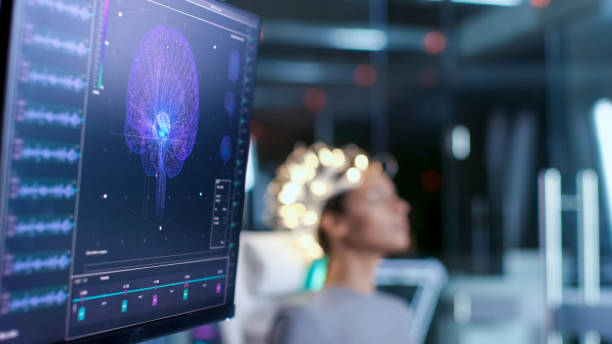Neuroaesthetics: The Science of Beauty Perception
The intersection of neuroscience and aesthetics has given rise to a fascinating field of study that explores how our brains process and respond to beauty. Neuroaesthetics, a term coined in the late 1990s, delves into the neural mechanisms underlying our appreciation of art, nature, and human attractiveness. This cutting-edge discipline has rapidly evolved, offering groundbreaking insights into the nature of beauty perception and its impact on our well-being. As we uncover the intricate workings of the brain in relation to aesthetics, we gain a deeper understanding of why certain visual stimuli captivate us and how this knowledge can be applied to enhance our daily lives.

In 1999, neuroscientist Semir Zeki formally introduced the term “neuroaesthetics” to describe the scientific study of the neural bases of beauty and art appreciation. This marked a pivotal moment in the field, as it bridged the gap between the humanities and the sciences, offering a new lens through which to examine age-old questions about beauty and its impact on the human psyche.
Neural Mechanisms of Beauty Perception
At the core of neuroaesthetics lies the exploration of how the brain processes and responds to visual stimuli deemed beautiful. Neuroimaging studies have revealed that when we encounter something we perceive as beautiful, whether it’s a breathtaking landscape, a captivating piece of art, or an attractive face, specific regions of the brain become activated.
The orbitofrontal cortex, a region associated with reward processing and decision-making, plays a crucial role in beauty perception. This area lights up when we experience pleasure from visual stimuli, suggesting a link between aesthetic appreciation and our brain’s reward system. Additionally, the anterior insula, involved in emotional experiences, and the anterior cingulate cortex, which plays a role in attention and decision-making, are also activated during aesthetic experiences.
Interestingly, studies have shown that the brain processes different types of beauty in distinct ways. For instance, the neural response to facial beauty differs from that of landscape beauty, highlighting the complexity of our aesthetic experiences and the specialized neural networks involved in processing various forms of visual appeal.
The Golden Ratio and Symmetry in Beauty
One of the most intriguing aspects of neuroaesthetics is the exploration of universal principles of beauty. The concept of the golden ratio, a mathematical proportion found in nature and often used in art and architecture, has been studied extensively in relation to facial attractiveness and body proportions.
Research has shown that faces and bodies that adhere more closely to the golden ratio are generally perceived as more attractive across cultures. This suggests that our brains may be hardwired to recognize and appreciate certain proportions and symmetries. However, it’s important to note that beauty perception is not solely determined by mathematical ratios; cultural influences and individual preferences also play significant roles.
The Impact of Beauty on Well-being
Neuroaesthetic research has revealed that exposure to beauty can have profound effects on our mental and physical well-being. Studies have shown that viewing beautiful art or natural scenes can reduce stress, lower blood pressure, and even alleviate pain. This has led to the incorporation of art and nature-based therapies in healthcare settings, demonstrating the practical applications of neuroaesthetic findings.
Moreover, the field has shed light on the concept of “aesthetic emotions,” distinct emotional responses triggered by aesthetic experiences. These emotions, such as awe, wonder, and transcendence, have been linked to improved mood, increased empathy, and enhanced cognitive flexibility. Understanding these processes opens up new avenues for improving mental health and overall quality of life through intentional exposure to beauty.
Neuroaesthetics in the Beauty Industry
The beauty industry has begun to take note of neuroaesthetic findings, incorporating this knowledge into product development and marketing strategies. Cosmetic companies are now exploring how specific visual cues, textures, and packaging designs can trigger positive neural responses, potentially enhancing the perceived efficacy and appeal of their products.
For instance, some brands are using neuroaesthetic principles to design more visually pleasing and emotionally engaging skincare routines. By creating products and rituals that not only deliver results but also provide a satisfying sensory experience, these companies aim to tap into the brain’s reward system, potentially increasing customer satisfaction and loyalty.
Ethical Considerations and Future Directions
As neuroaesthetics continues to advance, it raises important ethical questions about the nature of beauty and its societal impact. Critics argue that an overemphasis on neural responses to conventional beauty standards could reinforce harmful stereotypes and exacerbate body image issues. It’s crucial for researchers and industry professionals to approach this field with sensitivity and a commitment to promoting diverse representations of beauty.
Looking ahead, neuroaesthetics holds immense potential for further unraveling the mysteries of human perception and emotion. Future research may explore how aesthetic experiences can be leveraged to enhance cognitive function, creativity, and emotional well-being. Additionally, as virtual and augmented reality technologies advance, neuroaesthetics could play a vital role in designing immersive environments that optimize positive neural responses and promote overall wellness.
In conclusion, neuroaesthetics offers a fascinating glimpse into the biological foundations of our appreciation for beauty. By bridging the gap between art, science, and wellness, this field has the potential to revolutionize our understanding of aesthetic experiences and their impact on human flourishing. As we continue to explore the intricate relationship between our brains and beauty, we may discover new ways to enrich our lives and enhance our well-being through the power of aesthetic appreciation.





